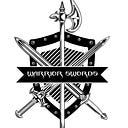Chinese Sword vs. European Sword: A Tale of Two Traditions
Far beyond mere weapons, swords in China and Europe became cultural cornerstones, embodying not just skill in combat but also societal values. This article dives deep into these fascinating traditions, exploring the unique strengths and weaknesses of Chinese and European swords within their historical context, rather than simply declaring one superior to the other.
“Far beyond mere weapons, swords in China and Europe became cultural cornerstones, embodying not just skill in combat but also societal values.”
Chinese Swords: A Dance of Elegance and Power
In the rich tapestry of martial arts history, few weapons embody elegance and power as harmoniously as Chinese swords. These blades, forged in the crucible of centuries-old traditions, are not merely tools of war but extensions of the wielder’s spirit, reflecting the philosophical depth and tactical wisdom of Chinese martial culture.
Jian (Straight Double-Edged)
The Jian, with its straight, double-edged blade, is often likened to a scholar’s brush in Chinese poetry — a testament to its elegance. Its design emphasizes speed and precision, allowing practitioners to execute intricate cuts with surgical accuracy. However, its finesse comes at a cost; the Jian’s slender profile makes it less effective against heavily armored opponents.
Dao (Single-Edged Sabre)
In contrast, the Dao is the warrior’s choice. This single-edged sabre trades some of the Jian’s precision for raw slashing power. Its curved blade and heavier design make it a versatile weapon, equally adept at cutting through bamboo or felling a mounted adversary. Yet, this power doesn’t come without drawbacks — the Dao offers less control compared to its more refined cousin, the Jian.
Construction of Chinese Swords
Chinese swordsmiths were master metallurgists, crafting blades that were both resilient and razor-sharp. High-carbon steel was a favored material, providing an optimal balance between hardness and flexibility. Many swords underwent differential hardening, a technique where the edge is tempered differently from the spine, resulting in a blade that could hold a keen edge yet resist shattering. Despite their fearsome capabilities, Chinese swords are surprisingly light. This emphasis on reduced weight and enhanced maneuverability reflects a core tenet of Chinese martial philosophy — that skill and speed triumph over brute force. A lighter sword allows for swift, continuous movements, enabling the swordsman to adapt fluidly to changing battle conditions.
Swordsmanship of Chinese Swords
Chinese swordsmanship is often described as a dance, where grace and lethality intertwine. This approach is heavily influenced by internal arts like Tai Chi, which emphasizes flowing, circular movements. In sword practice, this translates to techniques that smoothly transition from defense to attack, with each motion setting up the next. Different sword types demand distinct techniques. Jian forms focus on precise thrusts and quick, short cuts, exploiting the blade’s double edge for swift reversals. Dao techniques lean into the weapon’s strength, employing broader, more powerful slashes. Some styles even integrate acrobatic elements, using momentum to amplify the sword’s impact.
European Swords: Forged for the Crucible of War
European swords, shaped by the crucible of war-torn centuries, stand as testaments to the continent’s tumultuous history. Unlike their Eastern counterparts, which often blend artistry with function, European blades are unapologetically pragmatic — tools honed for the brutal realities of medieval warfare.
Longsword (Double-Edged, Two-Handed)
The longsword, a double-edged titan requiring two hands, embodies the versatility prized in European combat. Its substantial reach and robust design allow for a wide array of techniques: powerful cuts to overwhelm defenses, precise thrusts to exploit gaps in armor, and even grappling moves to unbalance foes. Yet, this jack-of-all-trades nature comes at a cost. The longsword’s length demands more space, making it less ideal in tight quarters, and its mastery requires extensive training.
Sidesword (One-Handed with Complex Guard)
As armor evolved, so did swords. Enter the sidesword, a one-handed weapon featuring an intricate guard. This design prioritizes dexterity, allowing the wielder to navigate the “zones” created by plate armor. Its complex hilt provides superior hand protection, making it adept against both armored knights and unarmored opponents. However, the sidesword’s single-handed use means it lacks the sheer cutting power of its two-handed brethren.
Construction of European Swords
European swordsmiths were pragmatists, focusing on creating blades that could withstand the shock of combat. High-quality steel, such as that from Toledo in Spain, was prized for its durability. Unlike some Eastern traditions that sought the perfect blend of hard and soft steels, European crafters often focused on creating uniformly tough blades that wouldn’t shatter against armor or other swords. The prevalence of armor profoundly influenced European sword design. Blades
“European swordsmiths focused on creating blades that could withstand the shock of combat, often using uniformly tough steel for durability against armor and other swords.”
